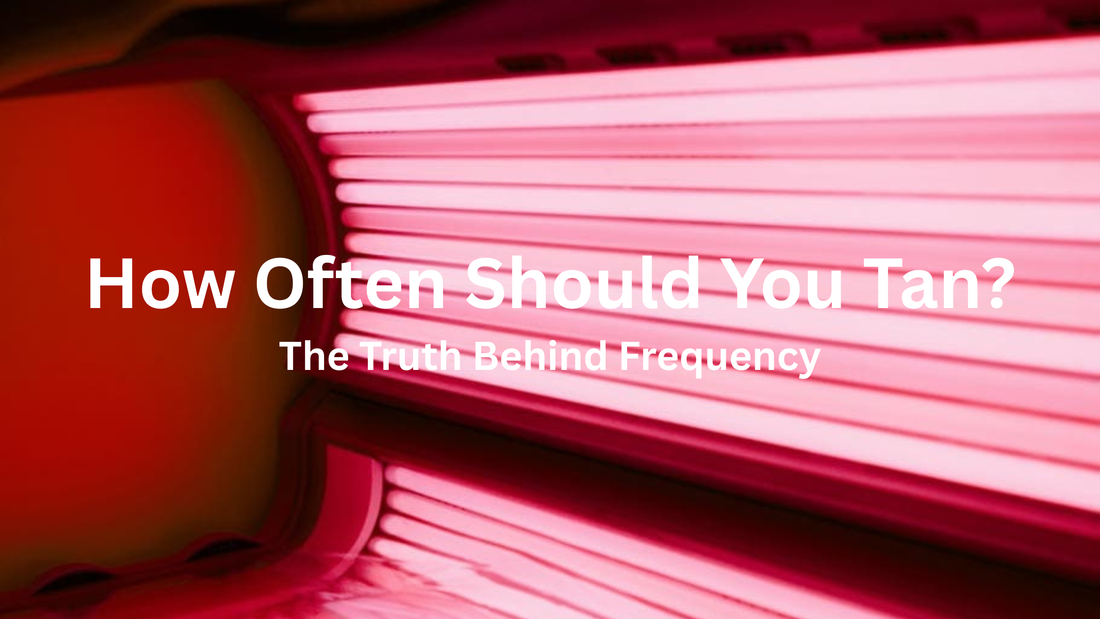How Often Should You Tan? The Truth Behind Frequency
Everyone loves that bronzed, glowing look — but one of the most common questions we hear is: “How often should I tan?”
The answer isn’t always straightforward. Frequency depends on your skin type, your tanning goals, and whether you’re using the right products to enhance and protect your skin. In this guide, we’ll break down the science, debunk common myths, and give you expert tips to create a tanning routine that’s effective, safe, and sustainable.
Why Frequency Matters
When it comes to tanning, more isn’t always better. Your skin produces melanin as a natural response to UV exposure, which creates that sun-kissed glow. But your skin also needs time to recover and repair between sessions.
-
Too much tanning = damage. Overexposure can lead to dryness, sensitivity, and premature ageing.
-
The right balance = long-lasting glow. By spacing sessions out correctly, you can achieve a deeper, more even tan with fewer risks.
👉 Think of tanning like working out: rest days are just as important as workout days for best results.
Understanding Your Skin Type
The Fitzpatrick Skin Type Scale is widely used to determine tanning suitability and safety. Here’s a quick breakdown:
-
Type I (Very Fair): Always burns, never tans. Indoor tanning not recommended.
-
Type II (Fair): Burns easily, tans lightly. 1–2 short sessions per week, with caution.
-
Type III (Medium): Sometimes burns, tans gradually. 2–3 sessions per week, moderate duration.
-
Type IV (Olive): Rarely burns, tans easily. 3 sessions per week often manageable.
-
Type V–VI (Darker Skin): Rarely burns, deeply pigmented. Can tan 3+ times per week, but maintenance still benefits from spacing.
👉 Your skin type is the most important factor in how often you should tan.
Common Myths About Tanning Frequency
There’s no shortage of bad advice out there. Let’s clear up a few myths:
-
❌ “Every day is fine.”
Wrong. Your skin needs recovery time between UV exposure. Daily tanning is not safe or effective. -
❌ “The more you tan, the darker you’ll get.”
False. There’s a saturation point where melanin won’t increase further. Beyond that, extra exposure only damages your skin. -
❌ “Lotion doesn’t matter.”
Incorrect. Using the right indoor tanning lotion not only hydrates your skin but can accelerate and deepen your results, meaning you can tan less frequently.
Building Your Ideal Tanning Routine
Your tanning routine should balance exposure, recovery, and enhancement. Here’s how:
1. Start Slow
If you’re new to tanning, begin with short, infrequent sessions (around 1–2 times per week). This allows your skin to build a base gradually and safely.
2. Maintain Wisely
Once you’ve achieved your desired glow, you don’t need to tan as often. 2–3 sessions per week is usually enough for maintenance, depending on skin type.
3. Choose the Right Products
Indoor tanning lotions are your secret weapon. They:
-
Boost melanin production (accelerators, intensifiers).
-
Deliver instant glow (bronzers).
-
Enhance circulation (tingle lotions).
-
Lock in moisture for an even, longer-lasting tan.
💡 Using lotion means fewer sessions are needed to reach the same depth of colour.
4. Listen to Your Skin
If your skin feels dry, sensitive, or irritated, skip your next session. Your body will tell you when it needs a break.
How Often Should You Tan Per Week?
Here’s a general guide:
-
Beginners: 1–2 sessions per week (shorter times).
-
Intermediate Tanners: 2–3 sessions per week.
-
Maintenance Phase: 1–2 sessions per week to keep your glow.
👉 Remember, these are guidelines. Always adapt based on your own skin’s response.
The Role of Recovery
Recovery is the unsung hero of a perfect tan. After UV exposure, your skin continues to produce melanin for up to 24–48 hours. Tanning too soon interrupts this process and adds unnecessary strain.
Spacing your sessions by at least 48 hours helps:
-
Prevent overexposure.
-
Reduce risk of burning.
-
Maximise the darkening effect of each session.
Safety First: Responsible Tanning
Indoor tanning can be a safe, enjoyable experience when done responsibly. Keep these rules in mind:
-
Always wear protective eyewear.
-
Never tan more than once per day.
-
Hydrate your skin with moisturisers between sessions.
-
Pair your routine with a quality indoor tanning lotion for optimal results.
The Golden Rule of Tanning Frequency
Consistency beats frequency.
Spaced-out, well-planned tanning sessions paired with the right lotion will give you a deeper, longer-lasting glow than daily overexposure.
Final Thoughts
So, how often should you tan? The truth is — it depends. Your skin type, your goals, and the products you use all determine the right frequency. What’s universal is this: smarter, less frequent tanning sessions almost always deliver the best results.
Ready to make the most of your next session?
👉 Explore our Top Indoor Tanning Lotions — designed to accelerate, hydrate, and maximise your glow while keeping your skin happy.
Join the conversation in our Sunkissed-Tanning FB Group — what’s your go-to tanning routine?

